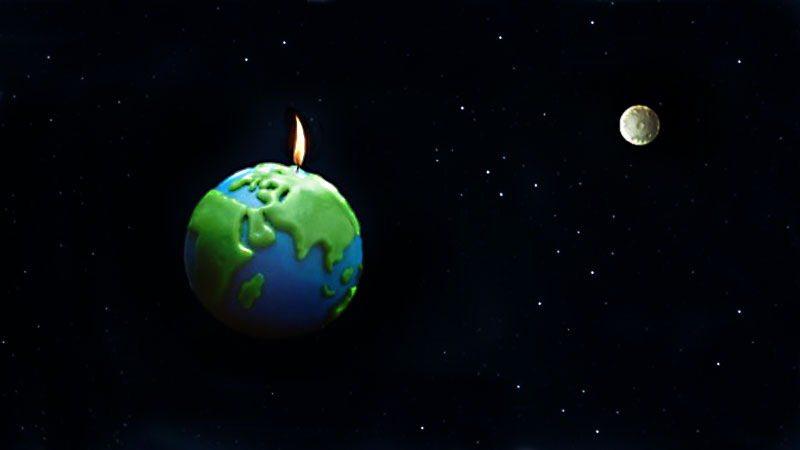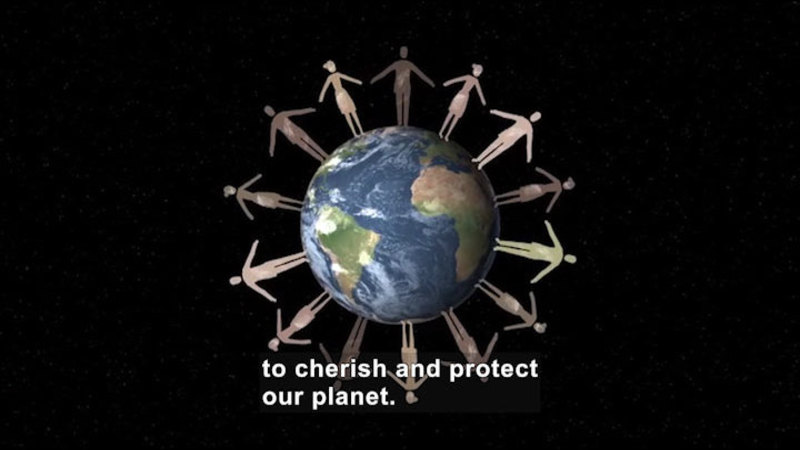<< Learning Center
Media Accessibility Information, Guidelines and Research
Earth Day - April 22

Earth Day was founded by United States Senator Gaylord Nelson as an environmental teach-in, first held on April 22, 1970. Activities for Earth Day, and often for the whole week, focus on the environmental issues that the world faces. These issues include extreme weather, rising sea levels, and altered ecosystems due to increased levels of CO2 in Earth's atmosphere.
In conjunction with Earth Day, the March for Science is conducted on April 22, celebrating science and the role it plays in everyday lives. Scientists estimated that 1.07 million people participated in rallies and marches for the first March for Science in 2016.
According to the Earth Day Network, "People march, sign petitions, meet with their elected officials, plant trees, clean up their towns and roads. Corporations and governments use it to make pledges and announce sustainability measures."
One of the simplest and most effective ways to help the environment is to plant a tree. Trees that consume the most carbon dioxide and poisonous gases are pines, oaks, Douglas fir, bald cypress, and black walnut.
Students can learn more about Earth Day and conservation efforts by viewing the described and captioned videos below.
Related Resources
Accessible Media
Conservation Videos

12th Hour

2050: A World Without Meat

A Project for the Planet: Service Learning in Your Community

All About the Holidays: Earth Day

Climate Change

Community Helpers: Environmental Scientist

Crash Course Kids Earth Science: A Fresh Future

DIRT! The Movie

Engineering River Cleanups

Human Elements: How Otters Can Save the Sea

Into the Outdoors: Careers in Conservation

It's Okay to Be Smart: Can Trees Really Fight Climate Change?

Moko: The Ever Changing Land

Uno Dos of Trace: Are Reusable Water Bottles Actually Bad for Us?
Into the Outdoors (Series)

Into the Outdoors: Mangrove Ecosystems and Angling Ethics

Into the Outdoors: Aquaculture Science

Into the Outdoors: Comparing Fish Life Cycles

Into the Outdoors: Crappie Stewardship

Into the Outdoors: Sturgeon Conservation

Into the Outdoors: Wild About Walleyes!

Into the Outdoors: Exploring Dairy Science

Into the Outdoors: Nitrogen Fixation & Soybeans

Into the Outdoors: Ice Age Trail--A Thousand Mile Footpath

Into the Outdoors: Ice Age Trekking
Eco S.O.S. (Spanish) (Series)

Eco S.O.S.--Consumerism (Spanish)

Eco S.O.S.--Responsible Consumerism (Spanish)

Eco S.O.S.--Air (Spanish)

Eco S.O.S.--Wind (Spanish)

Eco S.O.S.--Saving Water (Spanish)

Eco S.O.S.--Water Pollution (Spanish)

Eco S.O.S.--Forest Destruction (Spanish)

Eco S.O.S.--Forest People (Spanish)

Eco S.O.S.--Warming (Spanish)

Eco S.O.S.--Species Displacement (Spanish)
My Little Planet (Series)

My Little Planet: The Co. Koa

My Little Planet: A Day in the Life of a Water Drop

My Little Planet: The Dragonfly Princess

My Little Planet: The Fish and the Waterfall

My Little Planet: Great Ocean

My Little Planet: Itchy

My Little Planet: Lights on, Lights off

My Little Planet: The Lonely Oak Tree

My Little Planet: The Magic Root

My Little Planet: Not-So-Scary Monsters
Green Revolution (Series)

Green Revolution: Green Roofs

Green Revolution: Discover

Green Revolution: CityCar

Green Revolution: Hydrogen

Green Revolution: Biomass

Green Revolution: Wind Power

Green Revolution: Solar Power

Green Revolution: Microbes

Green Revolution: Electric Vehicles
Climate Connections (Series)

Climate Connections: Questions From Colorado

Climate Connections: Questions From Glacier National Park, MT

Climate Connections: Visiting Students In North Carolina

Climate Connections: Questions From North And South Carolina
Tags: educators, holidays, topic-playlist
Please take a moment to rate this Learning Center resource by answering three short questions.

